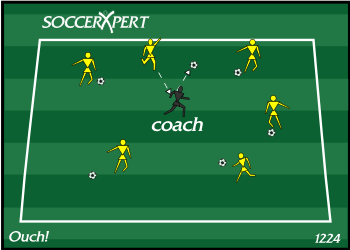The 2014 Soccer World Cup was the most-watched sporting event of all time, putting the Olympics behind. To say the least, soccer in itself is more popular with television viewers than all other sports combined because it’s simple, informal and playable anywhere. Now that you will go for the ticket4football.com/premiership-football-tickets/chelsea-vs-liverpool-tickets.t4f there are certain matters that you will need to know.
3.2 billion People saw at least a few seconds of the 2008 Beijing Olympics, and at one event, the opening of the 2012 London Olympics proved to be the most popular with its 900 million audiences.
But these numbers are only the best in the world of soccer. The Brazilian World Cup was followed by 3.6 billion viewers and the final itself was watched by 960 million. Perhaps these are not the most shocking numbers, but the activity in social media. The 2014 world generated 3 billion Facebook posts and 672 million Twitter posts. That’s nearly four times the amount of traffic generated by the London Olympics.

How Has Soccer Become The Most Popular Sport In The World?
Soccer was a widespread sport and leisure activity at the beginning of the 20th century, but its full social coverage is partly due to the First World War. Particularly in the final years of the war, men from all corners of the country and every social class were called in, who then almost certainly came into contact with the sport in training centers, barracks, or prisoner of war camps.
Post-destructive restoration and the technical achievements of civil war applicable to civilian life led to another industrial revolution, which led to the strengthening of the working class. At the same time, Europe’s economic and political status quo was overthrown, traditional ruling classes disintegrated, tsarist Russia dissolved, the Habsburg Empire disintegrated, and Germany lost its colonies.
A New Way to Spend Your Free Time
Political and economic consolidation was inconceivable without strong representation of the working class, especially after the strengthening of electoral movements. As one of the first signs of this, Saturday’s working day was abolished or at least shifted across Europe. Most of the workers were looking for cheap entertainment in their free time, either in soccer or watching soccer. This trend can be clearly seen in the Austrian-Hungarian friendly matches.
Size Matters
Soccer could afford the crowd a lot of fun, simply because of the fact that the field is huge compared to other ball games, which also means that huge stadiums can be built around it. Maximizing viewership in terms of popularity of the sport was a huge competitive advantage over the competition, and on the other hand it did not elite the medium, anyone could get to the stands.
Common Identity
If the early 20th century had had to bet on what would be the most popular ball game, surely the team sports that expressed equality and togetherness would have been the lowest both because of the spread of communist ideas and because of the urbanization of the Industrial Revolution. Soccer has created a symbolic space for active participants and passive spectators alike, in which they have found a common identity and, through being together, have found their place in society much easier.


